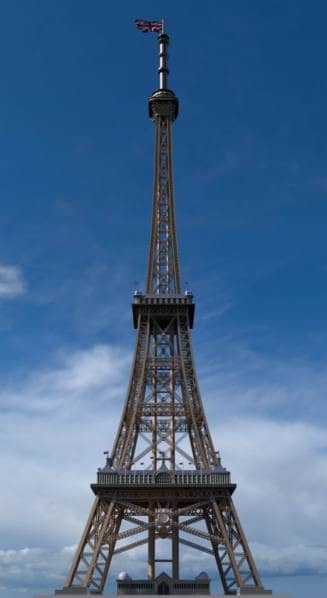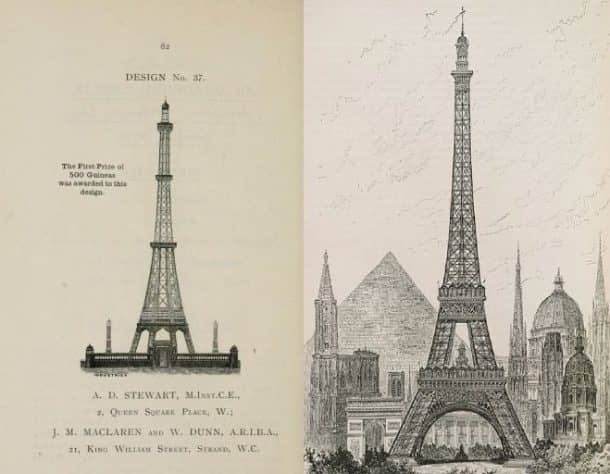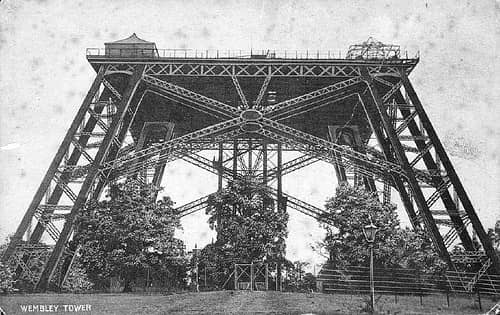When Eiffel Tower was inaugurated in 1889, people across the channel looked at it with envy rather than awe. They decided to build another tower which was supposed to be much grander than the French tower. The Watkin’s Tower was planned by a group of Englishmen for London which would be similar to the Eiffel Tower in Paris. A competition was held in 1890 for the ‘Tower of London’ which received 68 concept designs.

The construction of the tower began soon after the completion of the competition, however, some technical problems led to the demolition of the tower. The decision to build the Watkin’s Tower was not only a matter of pride but also a matter of investment. The Eiffel Tower was making huge sums of money on the entrance fee, restaurants, and shops. The investment was so successful that it had already recovered the construction cost. According to the Watkin’s Tower’s competition preface, the net takings during the inauguration amounted to almost 260,000 pounds and the construction cost was around 280,000 pounds. If London had built its own version of Eiffel Tower, it’d have benefited a lot from the increased trade from tourism.

The project was proposed by Sir Edward Watkin. He was an MP with a long history of running train companies. He was also involved in a failed project to build a channel. Watkin was also involved in the recent construction of the Metropolitan Railway which is now known as the London Underground’s Metropolitan line. Gustave Eiffel was initially consulted to help with the design of the tower but he declined soon. So the competition was run to find the winning design of the tower.
The rules of the competition were that any design was supposed to have a minimum height of 1200 feet. This would leave Eiffel Tower behind by 200 feet. The designs were sent from all over the world and some had really interesting concepts as well. Many designs were similar to the Eiffel Tower and some were really very imaginary. Finally, the design no. 37, submitted by engineer A.D. Stewart and architects J.M Maclaren and W. Dunn, of London were chosen. They were awarded 500-guinea prize money.
Their design was described to be of ‘oriental character’ and when completed, it could reach 1200 feet in length. When the construction began, the length was revised down to 1175 feet. This would have been the tallest structure in London, leaving behind the Shard as well which is 1106 feet tall. It would also have been 10 times the length of the tallest building of then, St. Paul’s Cathedral. The Watkin’s tower was much more spacious and greater than the Eiffel Tower. There were also plans for special facilities such as restaurants, theatre, shops, Turkish Baths, Promenades, Winter Gardens and many other amusements.
The tower was also supposed to have elevators for visitors and was intended to have an observatory and other rooms to conduct scientific experiments on the top level. The ‘Great Tower of London’ or ‘Watkin’s Tower’ was to be built in Wembley Park. The ground was broken in 1892 but The Metropolitan Tower Company, which was constructing the tower, soon ran into many problems. The construction fell behind due to the marshy ground on the chosen site. The project also faced financial problems due to which a more simplified design was decided to be built. The revisions affected the structural stability of the building. Even then, the first phase of construction was completed and opened to the public in 1896. The 47-meter structure didn’t gain popularity with the public and the revenue from the visitors failed to materialize.

This and many other financial problems eventually led to the liquidation of the company. The Watkin’s Tower was left uncompleted for some years and remained in the park for a number of years after that. Edward Watkin, the project’s champion, suffered a stroke and passed away in 1901. The public lost interest in the site and later it was closed.

The abandoned tower was later known as “Watkin’s Folly” or the “London Stump”. It was demolished in 1904 when declared unsafe. The site of the Watkin’s Tower was redeveloped in 1923 and Wembley Stadium was constructed there for the British Empire Exhibition. When the stadium was rebuilt in 2000, the tower’s concrete foundations were also discovered.
So that’s the story of the english Eiffel tower!


